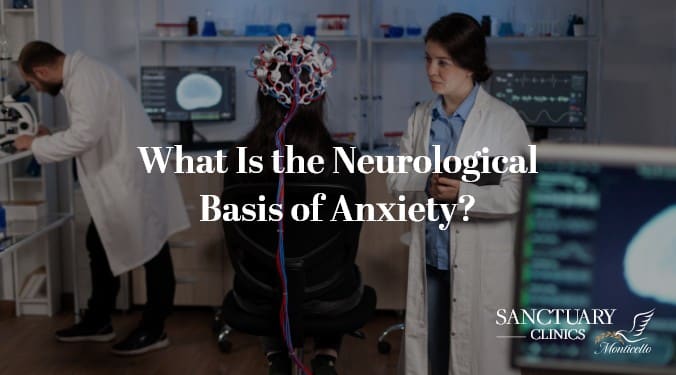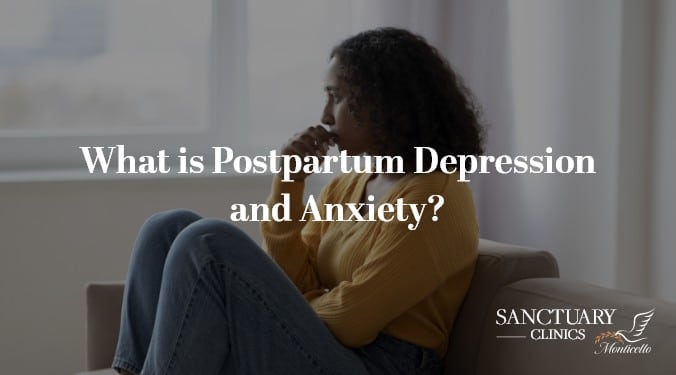Anxiety is a psychological condition which has gotten a lot of attention recently with the spread of knowledge on psychology and mental health. Everyone has particular situations or stimuli which cause them to be afraid and make them anxious. Some have a fear of public speaking, heights, snakes, and many other things. What separates these kinds of phobias from anxiety is the paralyzing aspect of this fear, and the anticipatory nature of the fear. By this token, anxiety can be defined as the anticipation of a perceived threat, whether real or not. Both the anticipation and perception which are central to the definition of anxiety are mental processes, underpinning the neurological or mental basis of anxiety.
Anxiety disorders happen when the equity of activity in the emotional centers (not the higher cognitive centers) of the brain are breached. A little bit of anxiety is healthy as it helps you prepare better to avoid humiliation or any perceived negative response. Anxiety becomes a problem when it becomes debilitating and hinders your daily/normal functioning; mentally, physically, socially, and relationally.
This article seeks to explore the neurological basis of anxiety and to show tips which can help you deal with anxiety.
Origins of Anxiety
Basic anxiety has its foundations in the evolutionary responses humans had to threats in their environment. This kind of normal anxiety was necessary for survival and was usually the difference between life and death. This normal anxiety is what would prevent someone from walking unarmed and alone through a place known to have predators. Anxiety, as described today, is an exaggeration of these adaptive responses, and its manifestations are maladaptive and detrimental to the host.
Important Brain Centers
The brain can be simplified and understood as comprising of two distinct parts/functions. The first is the thinking/rational brain which oversees rational thought processes which separate humans from other primates. The second part of the brain is the emotional brain which is in charge of our emotional responses and processes sensory inputs like pain. The emotional brain is also responsible for physiological responses like breathing, sleeping, eating, etc. which keep us alive. We shall look at a few important areas in our brain which give context to the neurological basis of anxiety.
- Pre-frontal Cortex (PFC) – This is the part of your brain which is responsible for higher executive functions like planning, making decisions, understanding and moderating social behavior, and predicting consequences for potential behaviors.
- Orbitofrontal Cortex (OFC) – This is the part which codes information, controls impulses, and regulates mood.
- Hippocampus – As part of the limbic system which has also been called the “emotional brain,” the hippocampus plays a key role in social cognition and emotion processing, episodic memory (formation of new memories about experienced events), and spatial navigation (remembering directions to a location). The hippocampus is also known to encode emotional context from the amygdala.
- Hypothalamus – The hypothalamus is crucial in keeping our bodies stable/regulated so we are not out of equilibrium. It does this by releasing hormones to maintain this balance, regulating body temperature, controlling appetite and sexual behavior, and regulating emotional responses.
- Amygdala – The main job of your amygdala is to regulate emotions like fear and aggression. It also gives context to our emotions (gives meaning to memories). Crucially to our topic, your amygdala is connected to other brain structures, giving it access to link the “thinking” brain to the “emotional” brain, which organizes our physiological responses to our cognitive state. For example, it increases our heart rate when we are in a state of fear to help supply enough blood in case we need to run or fight to save our lives.
On top of the above-mentioned parts of your brain, there are also neurotransmitters which are crucial to understanding anxiety such as:
- Norepinephrine – This is a neurotransmitter and a hormone which is released by the adrenal glands when your body is under stress. It increases alertness, arousal, and attention, which are vital in the acute stress response/fight or flight.
- Dopamine – This is the neurotransmitter and hormone which works as the reward center, giving pleasurable sensations, and helping in memory, relaxation, motivation, and learning.
- Gamma Aminobutyric Acid (GABA) – This is an amino acid which works to reduce neuronal excitability by inhibiting nerve transmission.
- Cortisol – This is a hormone which regulates your body’s stress response, blood pressure, and blood sugars. It’s also known as the stress hormone. During periods of stress, your body releases cortisol after adrenaline to keep on high alert. Cortisol also triggers the release of glucose from your liver for fast energy in times of stress.
These are some of the important parts of the brain which are directly affected by anxiety as we shall see in the following section.
The Anxious Brain
Anxiety in your brain can be a result of physiological factors in your brain or reactionary in terms of secretion of hormones in response to a particular stimulus.
In patients with Generalized Anxiety Disorder (GAD), an over activation of the amygdala has been found which can be caused by neurotransmission dysregulation like suppression of inhibitory neurotransmitters or increase in excitatory neurotransmitters. This means your brain (amygdala) is in a heightened state of arousal, either because the neurotransmitters which would maintain calmness are not being produced sufficiently, or the neurotransmitters which excite your state are being produced in excess. Such a hormonal imbalance can lead to an increased state of anxiety.
As a response to stimuli, when you are confronted by a threat, your brain (hypothalamus) releases the neurotransmitter norepinephrine, which is circulated throughout the body to prepare for either fight or flight. This means when it reaches your eyes, it can cause them to widen, cause your heart to pump more blood, and cause your lungs to take shorter, quicker breaths. Your adrenal glands then produce the hormone norepinephrine to keep your body on high alert. This leads to the secretion of cortisol to maintain the state of keeping your body ready to respond. The cortisol released also increases your blood pressure and blood sugar to provide more energy to face the threat ahead.
In times when there is a physical threat, your body is sufficiently ready to defend itself. This heightened arousal is a transient state which stops once the threat has been dealt with, and your body returns to normal. However, in people experiencing anxiety, the threat isn’t always visible, although someone with stage fright would feel this when in front of people, a person afraid of heights would experience it on a plane, etc. However, in instances like GAD, it can be difficult to know when the threat has subsided or even to know what the threat was that triggered this response in your body. Because of this, your brain is constantly being flooded with neurotransmitters and hormones even when there is no threat. Being in this state for a prolonged time causes the symptoms which manifest as anxiety. The dysregulation of hormones leads to increased heart rate, sweating, trembling, shortness of breath, tachycardia, and other symptoms which were intended for short-term benefit/response to a threat. But they are now being circulated in your body when there is no perceived threat. This is what makes anxiety a difficult condition to effectively treat because at times the triggers are unknown even to the patient.
However, there are a few ways to deal with anxiety which can help.
- Cognitive Behavioural Therapy (CBT) – This is therapy aimed at helping you discover the cognitive processes which are causing your behavior. You could be experiencing anxiety because of previous traumas, memories which the amygdala gives emotional context as threats, and you fear the threat could reoccur. Through CBT, the link between the past trauma and the fear of a future threat is assessed and you are given tools to help restructure your thoughts so you won’t give much credence to such thoughts. This mental restructuring helps to avert the trigger which was once causing the anxiety.
- Medications – In instances when you are suffering from a hormonal imbalance on a physiological level, there are medications which can help to supplement the work of the hormones being produced to keep your body well regulated.
Anxiety is a condition which has both physiological and psychological roots. Therefore, any approach to deal with it should be targeting the specific cause and not just a blanket solution.
Refereces









